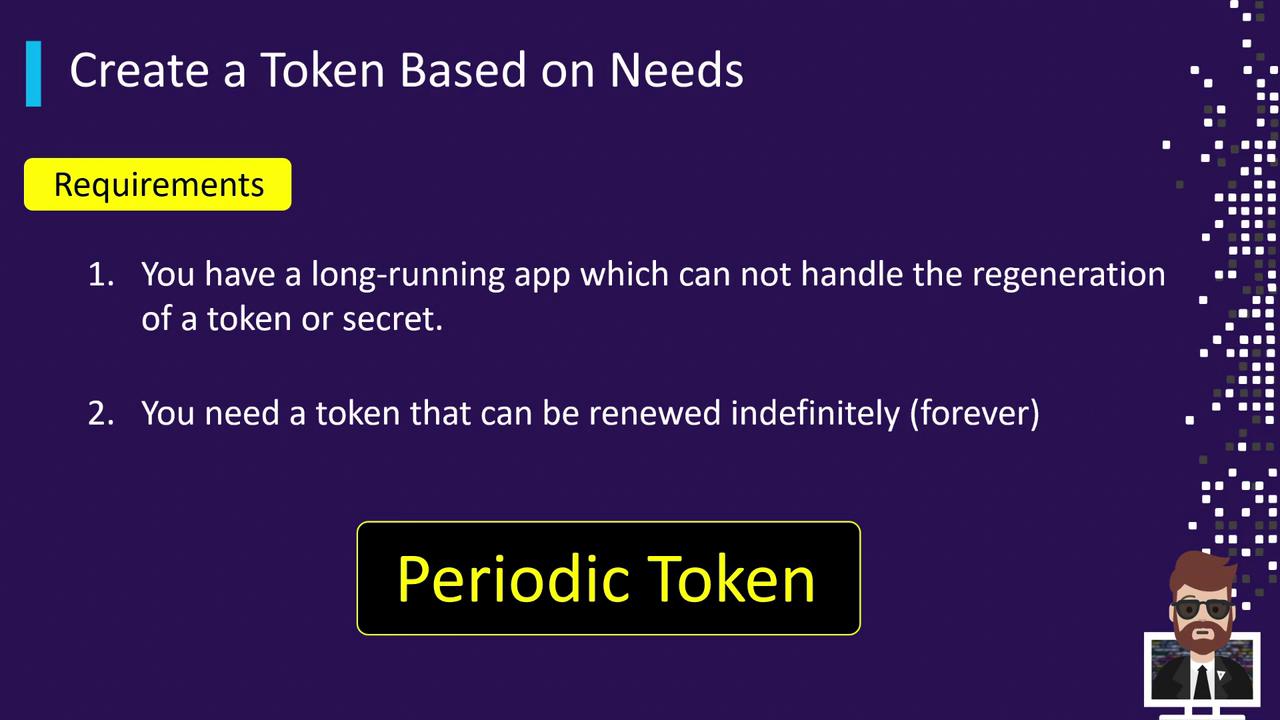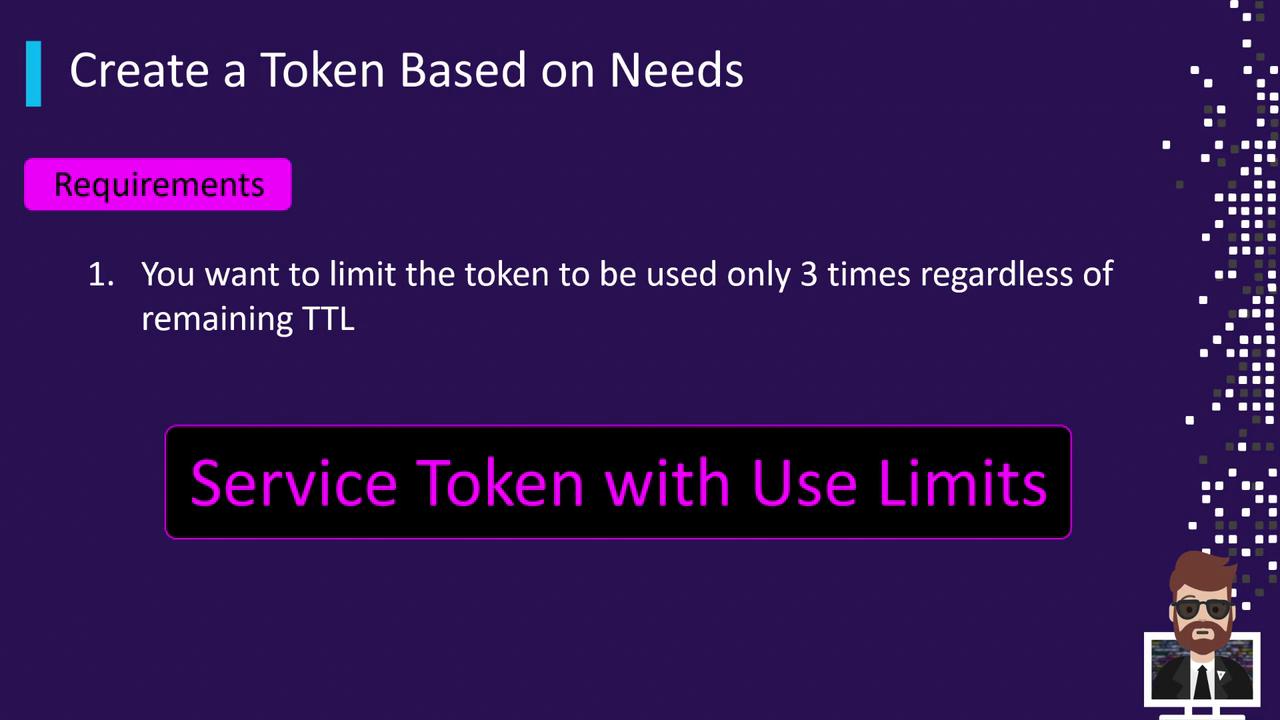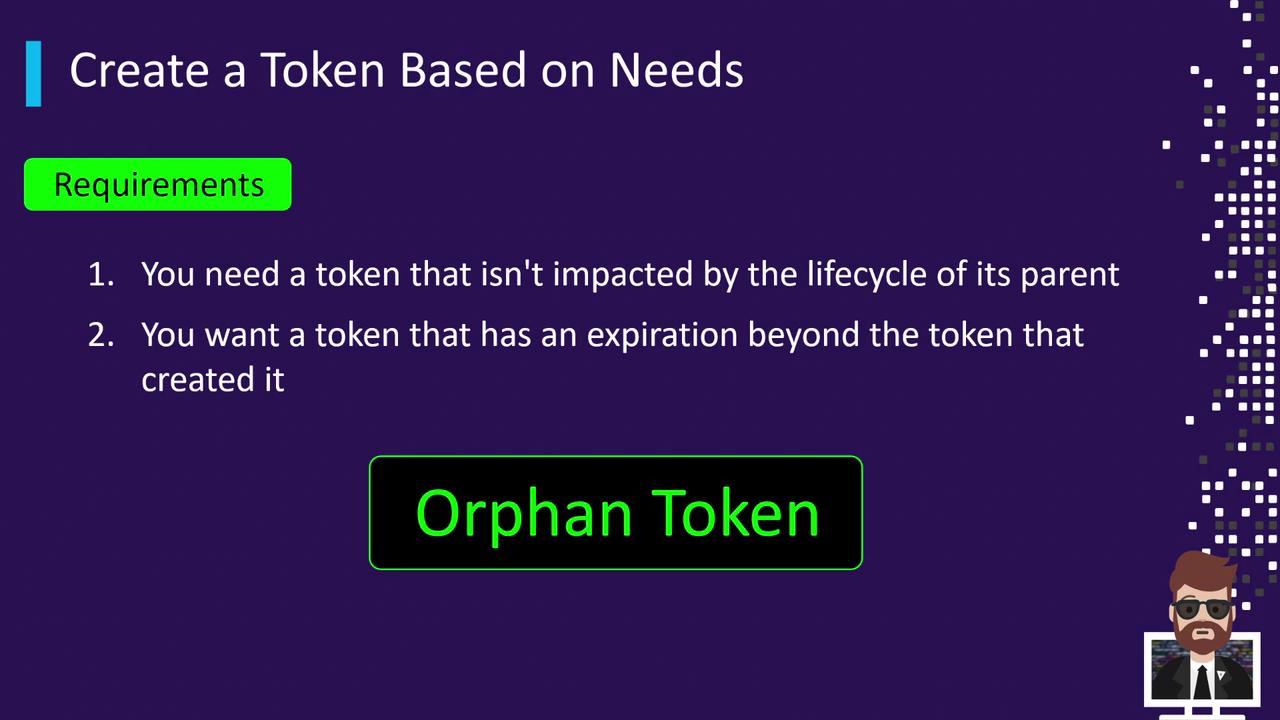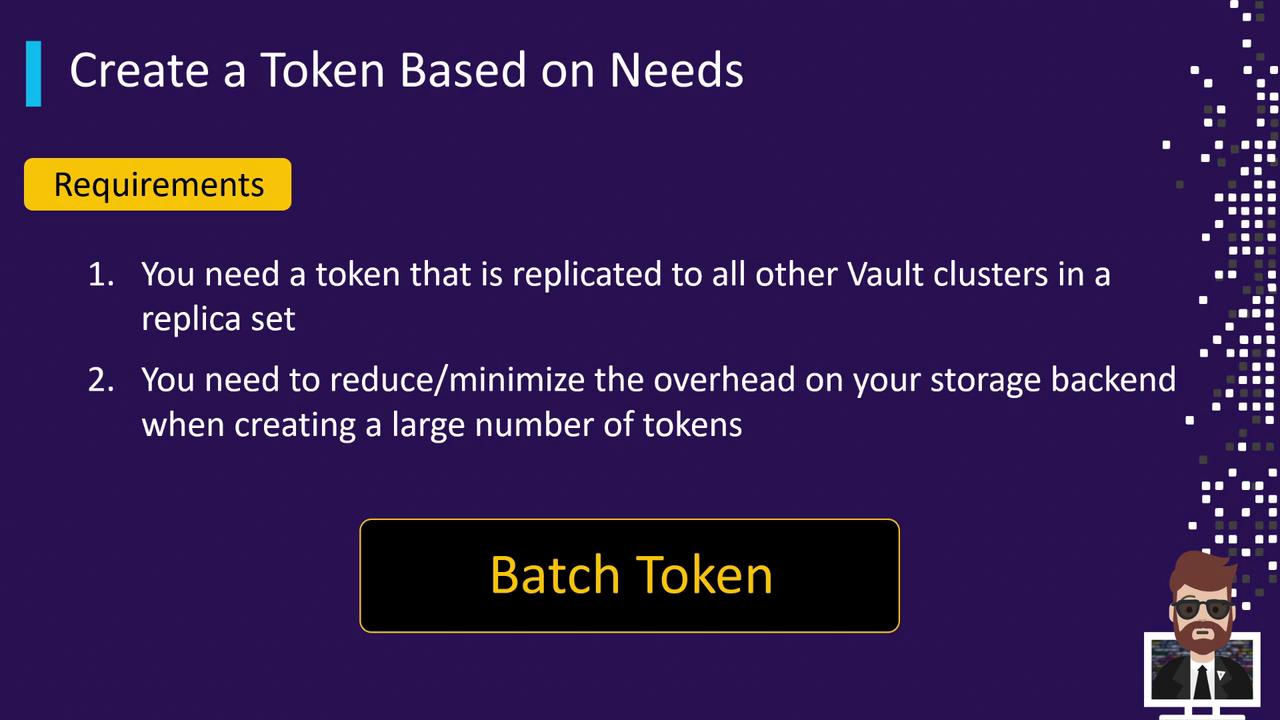HashiCorp Certified: Vault Associate Certification
Assess Vault Tokens
Create a Token based on Use Cases
When working with HashiCorp Vault, selecting the right token type ensures secure, efficient access for your applications and users. Whether you’re architecting a long-running service, enforcing strict usage limits, or preparing for the Vault Associate exam, this guide walks you through the five main Vault token types and their optimal use cases.
| Token Type | Ideal For | Key Feature |
|---|---|---|
| Periodic Token | Long-running applications | Renewable indefinitely without reissuance |
| Service Token (Use-Limit) | Short-lived tasks with fixed invocation count | Automatically revoked after a set number of uses |
| Orphan Token | Child tokens that outlive their parent | Independent lifecycle—cannot be revoked by parent token repeal |
| CIDR-Bound Token | Network-restricted access | Bound to specific IP or CIDR range |
| Batch Token | Multi-cluster replication | Ephemeral — not persisted to storage, minimizing overhead |
1. Periodic Token
Use a periodic token when you have a service that cannot handle token replacement mid-flight but still requires ongoing authentication. These tokens come with a finite TTL but no maximum TTL, allowing endless renewals.
Note
To renew a periodic token:
vault token renew <your-periodic-token>

2. Service Token with Use Limits
When you need to enforce a fixed invocation count—regardless of how much TTL remains—opt for a service token configured with a usage limit. Vault will automatically revoke it after the specified number of successful requests.
| Configuration | Example |
|---|---|
| Max uses | 3 |
| TTL | 1h |

3. Orphan Token
An orphan token has no parent association—making it immune to parent token revocation. Use it when you need a child token to survive beyond its creator’s lifecycle.
Note
Orphan tokens are ideal for background jobs or off-line processes that must persist independently.

4. CIDR-Bound Token
To restrict token usage to a specific IP or network block, create a CIDR-bound token. This is simply a service token with additional --cidr parameters:
vault token create \
--period=24h \
--cidr=10.3.5.16/32 \
--policy=my-policy
Even if the token is exfiltrated, it won’t work outside the defined network.

5. Batch Token
For global, multi-cluster environments, batch tokens automatically propagate across replication sets without ever hitting the storage backend. This reduces write amplification and storage load when you need to issue large volumes of tokens.
Warning
Batch tokens are not persisted. If a Vault node goes down before replication completes, the token may not be recoverable.

Additional Resources
Watch Video
Watch video content
Practice Lab
Practice lab